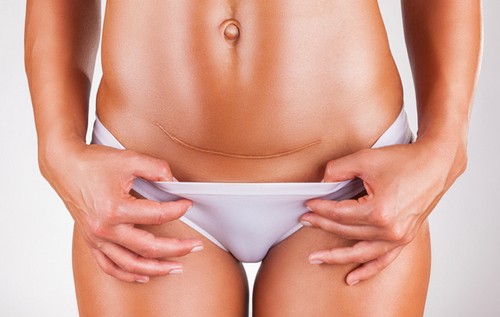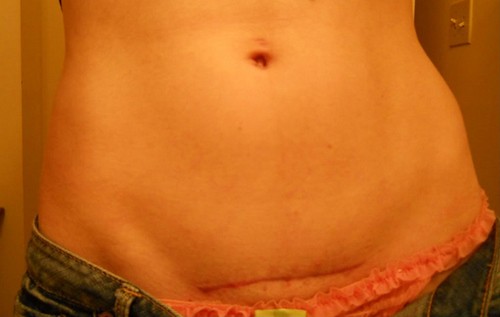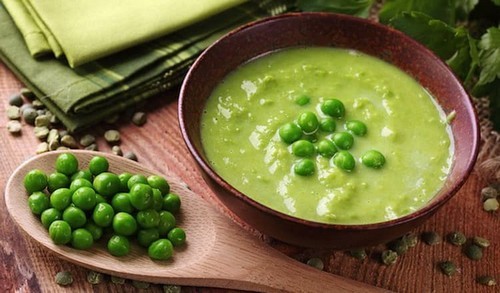They resort to cesarean section in case of a threat to the life of the mother or child. To do this, dissect the tissue, which, after removing the fetus, is necessarily sutured.
The suture after cesarean section over time will become barely distinguishable and will not be a barrier to natural childbirth during repeated pregnancy.
After surgery, uterine tissues, subcutaneous fat and skin are sutured.
Types of seams
According to the depth of the overlay, the seams are divided into:
- internal (sutured uterus and subcutaneous fat);
- external – apply to the skin.
The direction of the cut, and, therefore, the outer seam, is :
- longitudinal from the navel to the bosom;
- transverse to the skin pubic fold;
- transverse below the middle of the distance from the navel to the bosom by 3 cm.
The doctor chooses the type of incision depending on the urgency of the operation and the characteristics of the course of labor.
Planned surgical delivery ends with a transverse cosmetic suture along the pubic skin fold. After it remains a minor cosmetic defect, which is easily hidden by linen and a swimsuit, over time it will become almost invisible.
A longitudinal section is used in emergency conditions, for example, in acute fetal hypoxia (a prolonged lack of oxygen can lead to the destruction of brain cells) or massive bleeding in women. In such cases, wide and quick access is required. The trace after longitudinal dissection is prone to thickening and enlargement.

Postoperative period
In the postoperative Caesarean section, the suture needs care and supervision. In the operating room, it is treated with an antiseptic and sealed with a sterile dressing or temporary sticker. Every day for 5-7 days, the edges of the wound are treated and examined by a doctor or nurse. If the seam after caesarean section becomes wet, the replacement of the dressing is carried out as necessary.
Follow-up after surgery is required to provide timely assistance with :
- pain syndrome;
- rise in temperature;
- the appearance of complications.
Medicines are used only approved for use during breastfeeding, in safe dosages for the baby.
The suture and stomach after cesarean section hurt quite a lot. For pain relief, drugs are prescribed – analgesics (narcotic and non-narcotic). In order to prevent infection of the wound and internal organs, antibiotic and antimicrobial drugs are prescribed. They are administered intravenously or intramuscularly.
To prevent the formation of adhesions, it is recommended to get up already on the second day. You need to climb carefully and with the help of the clinic staff or relatives. A sharp rise can lead to dizziness and a sudden decrease in blood pressure.
To reduce pain and stress on the abdominal wall allows the postpartum bandage. He must be worn before getting out of bed.

Complications after surgery
From the internal organs :
- inflammation of the peritoneal tissue;
- adnexitis – inflammation of the fallopian tubes and ligaments, ovaries;
- endometritis – inflammation of the endometrium (the inner layer of the uterus).
These processes can lead to miscarriage, infertility, menstrual irregularities.
On the part of the postoperative wound, complications are divided by the time of occurrence :
- early – hematomas, inflammation, suppuration, seam divergence;
- later – ligature fistulas arising from the rejection of suture material.
If, suddenly, after a caesarean section, the suture oozes and a saturated red, brown liquid is separated, immediately inform the doctors. It may be bleeding or the formation of a hematoma.
Inflammation
The introduction of infection into the postoperative wound will cause inflammation, which is extremely dangerous, since it involves suppuration and divergence of the edges. Another cause of inflammation of the suture after cesarean section is the reaction of tissues to suture material. The rejection of alien silk threads is due to the individual characteristics of the human body.
The lack of treatment will lead to the fact that the seam after cesarean section begins to fester. You can not engage in self-medication. It is necessary to consult a surgeon who will examine the wound surface, create the possibility of an outflow of pus and prescribe antibiotics, local treatment with hypertonic solutions and ointments.
Healing
A scar on the skin forms a week after the operation. Silk seams are removed at the same time. For cosmetic intradermal sutures, absorbable sutures are used. They dissolve in the period from 65 to 80 days from the moment of application and do not require removal. Suture treatment after cesarean section in this case is performed in the same way as when using silk suture material.
For quick rehabilitation, they are advised to do feasible exercises while lying on the bed. Contraction of the muscles of the pelvic floor enhances blood circulation in the pelvis, accelerates recovery.

Aesthetic correction
Operating gynecologists strive to make the incision small and neat, but sufficient for the fetal head to pass, which contributes to the rapid healing and minimal formation of connective tissue at the incision site. Depending on the individual characteristics of the body, a scar after cesarean section may be less or more noticeable. In the formation of the scar, special creams and ointments should be used to promote rapid tissue regeneration and prevent the formation of keloid scars.
Correction Methods :
- laser resurfacing;
- mechanical and chemical peeling.
Peels, unlike laser resurfacing, have a rough effect on the scar and adjacent tissues. The opposite result is possible when the defect becomes more noticeable. Laser resurfacing is performed after a complete scar formation. Disposal of a defect occurs after several procedures.
Before deciding on a laser correction, it is necessary to consult a doctor. The procedure is painless and the visible effect will not take long. Layer-by-layer exposure to the laser beam makes the seam soft and allows you to merge with healthy tissues.
After discharge from the hospital
Pain after cesarean section may occur after the healing of external tissues and discharge from the hospital.
It provokes a sharp increase in pressure in the abdominal cavity that occurs when:
- coughing, sneezing;
- weight lifting.
Doctors strongly recommend that you do not lift anything harder than a child, so as not to create a load on the internal seams. Otherwise, there is a threat of their divergence.
Caesarean section only upsets the fact that it leaves a mark. But the glee from the advent of a new life eliminates this small flaw. There is a positive side to the appearance of a scar. You can safely answer the question of the crumbs “where did I come from” – from the tummy, without going into details, and to provide evidence – a scar.



